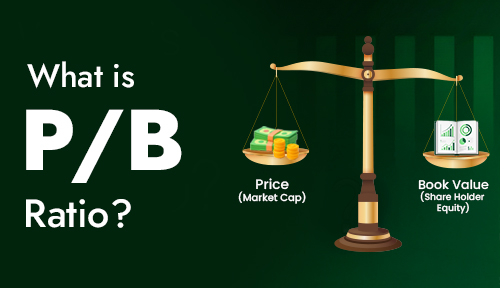
Understanding Price-to-Book Ratio: A Valuation Tool for Equity Investors
In the ever evolving world of stock investing, identifying a company’s true worth can often feel like finding direction in a maze. Among the various valuation metrics available, the Price-to-Book (P/B) ratio stands out as one of the most insightful measures for evaluating a company’s value. The price-to-book ratio is used better with capital-intensive or asset-heavy companies such as banks, utilities, and manufacturers.
At Integrated, we put emphasis on providing investors with the necessary knowledge and tools that help them in making calculated decisions. iInvest allows users to view stocks in multiple industries at the same time and presents valuation metrics like the P/B ratio in an easy-to-understand manner.
What's the Price-To-Book Ratio?
The price-to-book ratio is calculated by dividing a company's current market price per share by its book value per share. This ratio compares how the market values a company with the actual value of its net assets. Investors use this ratio as a quick checkpoint to determine if a stock is undervalued, overvalued, or fairly priced relative to its actual asset base.
Formula:
P/B Ratio = Market Price per Share / Book Value per Share
For example, a P/B ratio of 1 indicates that the stock is trading exactly at its book value. A ratio below 1 may suggest that the stock is undervalued, while a ratio significantly above 1 might mean the market is pricing in future growth or intangibles like brand value and intellectual property. The simplicity of the ratio makes it a favourite among fundamental analysts who want a first level screening before diving deeper into financial reports.
P/B Ratio Meaning and Interpretation
The P/B ratio's meaning needs context to understand. A low P/B might catch the eye of value investors, but it doesn't always point to a good deal. At times, a low ratio could show real problems in the company, like falling profits or old assets.
On the other hand, a high price-to-book ratio may not be some red signal but may simply snap investor confidence derived from consistent earnings or some competitive moat.
Hence, the consideration of the ratio alongside other financial attributes such as ROE, debt, and growth trends would give an equilibrium of view.
How Equity Investors Use It
The P/B ratio has a big role in equity investing, where finding priced companies can lead to gains over time. It helps as a useful tool to spot stocks that are worth less than they should be—those trading below what their assets are worth.
At Integrated, our stock analysis tools help users screen companies using valuation, growth, and profitability metrics. You can compare two companies in the same industry or assess how to allocate your portfolio through iInvest. By integrating P/B insights with profitability and growth filters, investors can make more informed and confident portfolio decisions.
When is the P/B ratio useful?
That price-to-book ratio is more fitting for industries where assets are considered a standard measure of worth. In banking and finance, investors typically heavily rely on book value. Comparison of P/B ratios of companies within these sectors assists investors in determining which ones could present better value relative to their peers.
While useful, the P/B ratio also has drawbacks;
- It may mislead investors if used alone, as some companies may have depreciated assets or accounting distortions.
- In asset-light industries such as technology or FMCG, it becomes less relevant since such firms derive most of their value from intellectual capital rather than physical assets.
- The ratio also fails to account for future earnings potential, which means it should always be combined with metrics like Return on Equity (ROE) and Earnings per Share (EPS).
Conclusion
The P/B ratio is not a mere blanket formula, but when handled with care, it forms a robust foundation for value investing. By distinguishing between stocks that are truly undervalued and those that are priced low for a valid cause, it would be useful.
With the right app, such as iInvest's easy-to-read financial indicators, investors can take the price-to-book ratio and run it in context—they may now make a confident decision by looking at this ratio with a set of multiple financial indicators or firm characteristics. At Integrated, we believe that if investors came to understand these core valuation metrics, they could move beyond just making speculations and actually focus on having long-term wealth through proper equity investing.



